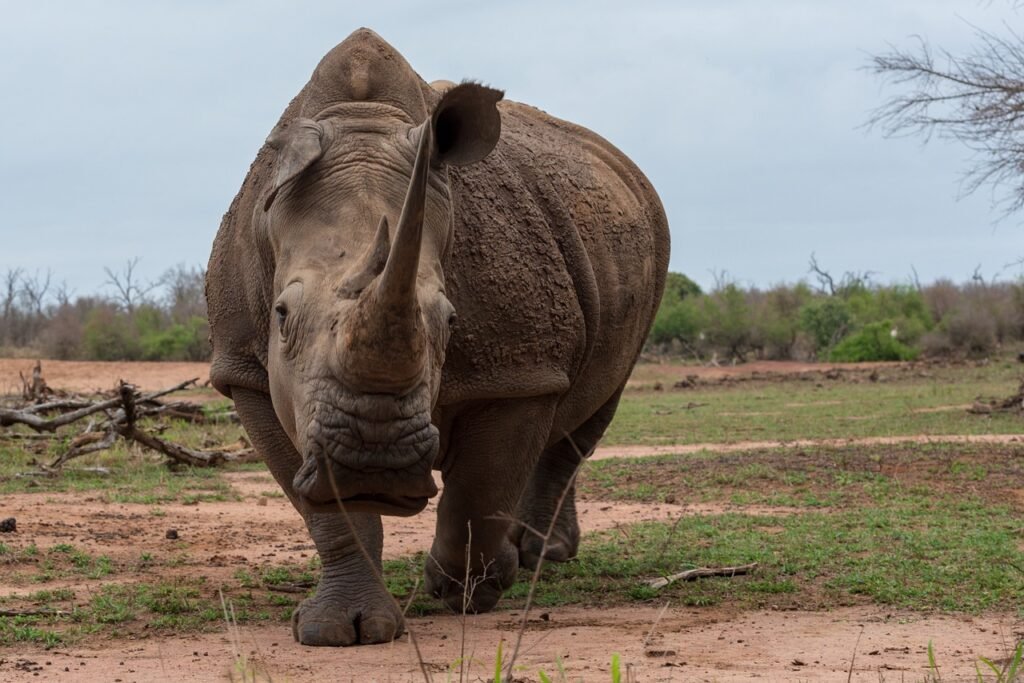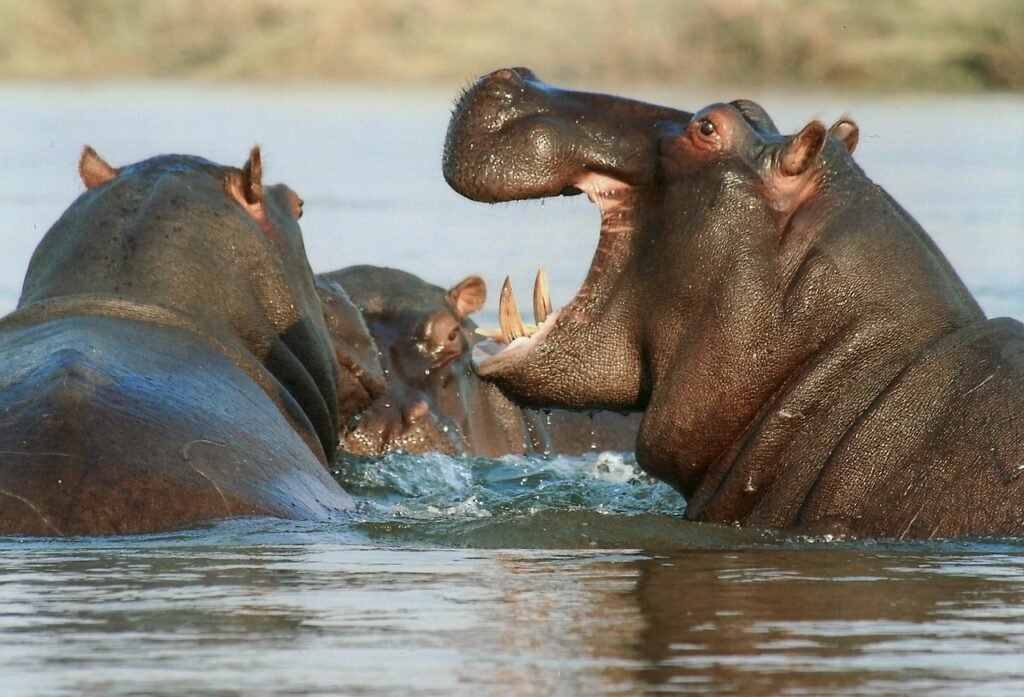Introduction:
When it comes to comparing two of Africa’s most infamous and intriguing animals, the rhino and the hippopotamus, Hippo vs Rhino always gains people’s attention not only those who are obsessed with nature but ordinary citizens as well. The two animals share characteristics of being as large as possible for the Earth’s ecosystem and are endowed with interesting features as will be seen. Nevertheless, they are different in behavior, appearance, and function in relation to the environment even though they inhabit the same ecosystem and are of a similar size. In this comparison, we will compare and contrast their physical features, abode, feeding habits, behaviors, and the endangered status of these two gigantic creatures.

Rhinoceros:
Species and Size:
The rhinoceros, or rhino, comes in five species: Here are, the five different kinds of Rhinos: White Rhino
Black Rhino,
Indian Rhino,
Javan Rhino,
and Sumatran Rhino.
Adult white rhinos can grow up to 2500 cm in length, 1,8 meters in height, and a weight of 2300 kgs while the dwarf Sumatran rhino grows up to 210 cm in length 90 cm in height, and a weight of 800 kgs.
Body Structure:
Rhinos like most other large mammals have tough skin that may be up to 5 cm thick in some areas. They have large-sized bodies and short lengths of their limbs, and also the horns on the snout are rather large.
Horns:
The most unique feature of Rhinos is perhaps the horn although their size is quite conspicuous too. The black and the white rhinos have two horns while the Javan and Indian rhinos have a single horn. Rhino horns are made of keratin that is found in human hair and nails, or any human hair for that matter.

Hippopotamus:
Species and Size:
The hippopotamus, or hippo, is primarily represented by two species: Both types of hippos include the Common Hippo and the Pygmy Hippo. The common hippos may weigh between 1500 and 3200 kilograms while the pygmy hippos are comparatively smaller at 180 to 275 kilograms.
Body Structure:
Hippos are rather large animals with round and rather heavy-looking bodies and rather short limbs. They have large mouths with big tusks and they Too have a thick layer of blubber that enables them to float in water.
Teeth:
Hippos possess largely developed canine teeth as well as an incisor that might reach the extent of 50 cm (20 inches). Such teeth are referred to as fighting teeth and are sometimes regarded as being one of the most effective weapons in the animal kingdom.

Behavior and Social Structure:
Rhinoceros
Behavior:
Black and white rhinos for instance are mainly solitary animals despite the fact that there are instances where rhinos can be seen in groups. The only time it is possible to notice group accumulation is for the purpose of Mating or when a female is nursing young.
Communication:
Rhinos make use of vocal intonation including grunts and snorts as a way of communicating. They also use scent markings in order to define their territory.

Hippopotamus:
Behavior:
Hippos are social animals that dwell in groups that are referred to as pods as well as herds, and each group is comprised of between 15 to 30 hippopotamuses. These groups comprise of females and young ones which are headed by a single male.
Communication:
Hippos are known to make use of grunts and roars so as to be able to convey their messages to the other members of the hippo group. They are also acknowledged to be aggressive especially each time they are protecting their geographical region.

The Outcome
In a hypothetical hippo vs rhino on land, where both animals are equally exposed, the rhino might have a slight edge due to its horn and charging ability. However, the hippo’s aggressive nature and powerful bite make it a formidable adversary. The rhino’s armor could offer some protection, but a determined hippo might still inflict serious damage.
Ultimately, the outcome would depend on various factors such as the environment, the health of the animals, and their specific combat strategies. In their natural habitats, these encounters are rare because their paths rarely cross, and both species have evolved to thrive in their own ecological niches rather than engaging in direct combat.
Regardless of who might come out on top, it’s crucial to remember that both rhinos and hippos are impressive in their own right and play vital roles in their ecosystems. The goal should be to appreciate and protect these magnificent animals rather than pit them against each other.




